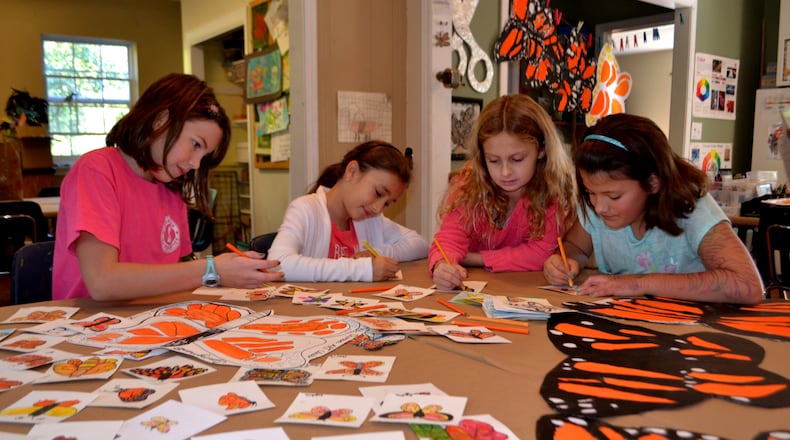In a guest column, retired Georgia educator Jim Arnold questions the long-held practice in public schools of grouping children by age and touts the Montessori method of multi-age groupings based on a child’s stage of development.
The former superintendent of Pelham City Schools, Arnold has his own education blog. In his 48 years in public education, Arnold also served as a classroom teacher, assistant principal and principal and is an adjunct professor at Troy University.
By Jim Arnold
Why do we continue to group students to successive educational levels by age? Even though age tells us nothing about what each student can do or might be capable of, schools remain wed to the practice. That’s also why most teachers teach to the middle of the class; that is, they don’t teach above the level that most of the students can follow.
Credit: Courtesy photo
Credit: Courtesy photo
Parents can vouch that no two children, even those in the same family, develop in the same ways at the same time. Each individual child presents far too many variables in growth, maturation and development for any “basic assumptions” about children in general to hold much in the way of validity. Adults should never assume that a child has a disability because the development of cognitive and/or physical skills is uneven, and nor should they assume developmental delays will always get better over time. Standardized assumptions are the enemy of individualized growth and educational practice.
Grouping students by age is not a universal practice. Italian educator and innovator Maria Montessori mixed students across age groups and asserted that doing so provides younger students with models to emulate and additional sources of care and emotional support. Older students learn to develop their capacities to nurture and to learn through teaching others.
Developed initially as a way to assist special needs students in Italy, the Montessori model uses multi-age classrooms to normalize differences in children. Every student is surrounded by a range of skills and ability levels and learns that different doesn’t mean deficient or abnormal, and that everyone can learn from each other.
Children naturally learn by watching others, imitating and integrating the reading, activities and skills they see in others into their own behaviors. Using this method, students also learn every student has at least one skill they can effectively teach to others. Serving in the role of teacher to others leads to an acceptance of learning from other students in the same way.
The adult teacher’s role is to serve as a guide for students, and to demonstrate appropriate use of materials and methods before students use them on their own. Teachers move students forward within subjects when students or small groups indicate a readiness to advance.
Standardized tests have no place in the curriculum. Each student’s capabilities and skills are assessed daily through teacher observations, student work, student responses and mental skills and comfort using the provided materials. Since student interests are a key to teachers as they guide students through the curriculum, students grouped by abilities (as opposed to age) are often adept at reading and writing before age 6. Studies show multi-age classrooms assist social and emotional development.
Montessori teachers are trained to support relationship development among students and assist them in developing self-discipline and self-control and learning the difference between appropriate and inappropriate behaviors. Intense and specific training is required for teachers to master these techniques, and they are an integral part of the training required to support Montessori’s belief that teaches students not only what is allowed, but how to correct their own problematic behavior.
Since the method places an emphasis on whole child development, Montessori believed “education must not be understood in the sense of teaching, but of assisting the psychological development of the child, including concepts of calmness, clarity, courage, compassion, wonder, joy, creativity, connection and playfulness.” Teachers are trained to serve the role of “unobtrusive director” in the classroom, and students work in small groups or individually at their own pace on things that interest them.
The point is that students are allowed to move at their own pace and are not kept in age-restricted groups simply because of their date of birth. Waldorf Schools, Reggio Emilia Schools and HighScope Schools are all methods that focus on the child and individual progress and learning and not necessarily moving — or being moved — from grade to grade because of their age.
It would be easy to find systems to volunteer for pilot programs for any of these methods for a three-to-five-year time period. Where would the money come from? I have a suggestion. Data from the U.S. Department of Education shows school district administrative staff increased from 97,270 in the fall of 2000 to 170,158 in the fall of 2017, an increase of 74.9%. In comparison, teacher ranks during that same period only increased 7.7%, according to the federal agency. You can certainly see the possibilities for improvement in trading in many of those administrative positions for teaching professionals.
About the Author
The Latest
Featured




